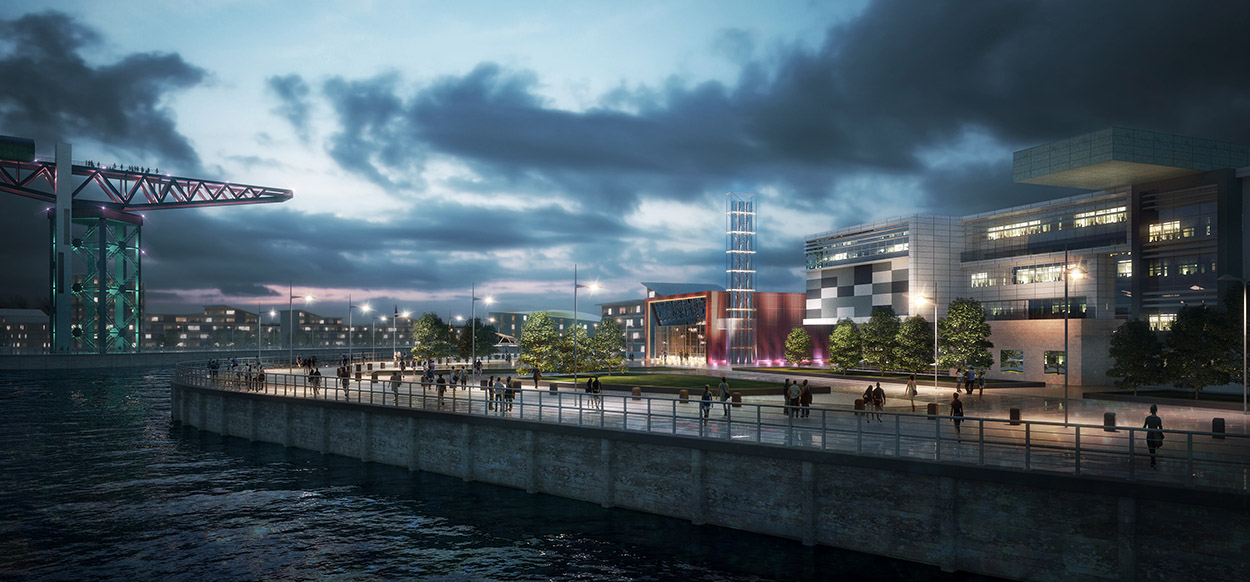
In less than ten months’ time, the eyes of the world will be on Glasgow, as the city plays host to the UN’s 26th Climate Change Conference (COP26). Leaders from across the world will come together to discuss enhanced ambitions to reduce greenhouse gas emissions and take steps to mitigate the effects of climate change. This is a process known as the ‘ratchet mechanism’, which envisions signatories of the Paris Agreement, stepping up their commitments to reduce carbon emissions every five years. This year’s conference in Glasgow is the first time that this mechanism will be in play, and expectations surrounding a significant acceleration of efforts to reduce greenhouse gas emissions are high.
With an eye on climate change and the impact of the Covid-19 pandemic, many countries are already discussing how they can take advantage of the need for economic recovery as an opportunity to accelerate the transition to carbon neutrality. A key element of this transition will be the decarbonisation of the housing stock, and the Climate Change Committee has highlighted the significant role that the implementation of renewable forms of heating will play in reducing the amount of carbon emitted by our homes.
Queens Quay, Clydebank
An example of a project which will take advantage of a variety of modern renewable technologies to create the “greenest town in Scotland” is the Queens Quay development in Clydebank, a site which is only five miles from the Scottish Event Campus where COP26 will take place.
Queens Quay is a £250 million regeneration of the former John Brown shipyard in Clydebank. Designed to take advantage of its waterfront location, the development will feature a variety of mixed-use spaces and a pioneering district heating system. This system will utilise Scotland’s first major and the UK’s largest water-sourced heat pump. The heat pump will extract heat from the River Clyde, and after a process of compression, the heat will be pumped into the development using a buried modular district heating system. It is estimated that this innovative combination of heat pump and district heating technology will cut more than 4,000 tonnes of CO2 emissions each year.
But just how do these technologies work? In this blog, we will take a look at how heat pumps and district heating systems operate, and their application in the Queens Quay development in Clydebank.
Heat pump
In simple terms, a heat pump is a form of renewable heating system that is able to move thermal energy from one location to another. There are a number of different types of heat pump which can extract thermal energy from different locations. At the Queens Quay development, a water-sourced heat pump will be used to extract thermal energy from the River Clyde.
Water-sourced heat pumps use a network of submerged pipes which contain a working fluid that absorbs the heat within the body of water. This working fluid then undergoes a process of conversion that increases the temperature of the heat generated. Once at an appropriate temperature, it can then be used to provide heating and hot water.
Naturally, as not all developments are located near a body of water, the use of water-sourced heat pump is relatively uncommon. However, water-sourced heat pumps are able to operate more efficiently than ground and air-sourced heat pumps, as heat transfers more efficiently due to the stability of the temperature of water.
District heating
Once heat is produced, it’s vital that it is transferred to buildings in an efficient and reliable manner that prevents heat-loss. A system of district heating is often the most reliable way to utilise energy produced by any form of heat pump, and analysis conducted by the Department for Energy and Climate Change (now the Department for Business, Energy, & Industrial Strategy) found that this combination offers “large CO2 emissions reduction potential”.
A district heating system uses a network of insulated pipes to deliver heat from a centralised energy centre direct to connected buildings. Instead of a boiler, each building will have a heating interface unit which will enable individuals to control the temperature of the heat and hot water they receive without impacting other connected properties.
On top of helping to lower overall fuel costs and reduce greenhouse gas emissions, district heating systems are also easily expandable and new properties can be added to the network as required. This ensures that district-heating systems are future-proofed and are able to respond to the heat requirements of developments as they evolve over time.
Queens Quay implementation
The implementation of a water-sourced air pump and district heating system in the Queens Quay development provides Clydebank with the opportunity to become the “greenest” town in Scotland, and sets an example of how new developments can be created in a way that supports Scotland’s ambition to become net-zero by 2045.
By linking each property in the development to the network, and establishing a council owned energy company as operator, residents of Queens Quay will benefit from reductions in both the cost of energy and their overall carbon footprint. The success of a renewable heating project at this scale could be a significant development in Scotland’s transition to net-zero, as it may prove that renewable heating systems are an effective means to tackle climate change and fuel poverty.
Additionally, as a key benefit of a district heating system is its modularity, there is scope for existing buildings within Clydebank to be connected to the renewable heating network. West Dunbartonshire Council have set out their desire for the nearby NHS Golden Jubilee National Hospital to be added to the network and are also considering if all future developments should be required to join the district heating system.
Final thoughts
The dual threats posed by climate change and Covid-19 have provided the world with a rare opportunity to undergo a truly revolutionary process of recovery. With expectations high that this year’s COP26 will result in countries accelerating the transition to carbon-neutrality, the development of a pioneering renewable heating system just five miles from the conference may offer us a glimpse of the way homes will be heated in the future.
Decarbonising the housing stock is vital in the battle for carbon neutrality, but concerns have previously been raised about the impact this may have on people in fuel poverty. Ensuring that the transition to renewable forms of energy does not exacerbate existing inequalities will be key to ensuring that everyone benefits from the journey to net-zero.
As a result, the success of the roll-out of the water-sourced heat pump and district heating system in Queens Quay, and the expected reduction in overall energy costs for residents, may prove to be a major stepping stone in Scotland’s journey to becoming carbon neutral.
If you enjoyed this article you might like to read:
Follow us on Twitter to see which topic areas are interesting our research team.
Share
Related Posts
Supporting residents on the decarbonisation journey: leveraging data for effective retrofit projects
As the drive towards decarbonisation intensifies, the social housing sector’s ability to collect, store and manage vast amounts of data becomes increasingly critical. With a shared goal of creating warmer, carbon-free homes, housing associations’ strategic use of data is essential ....
The recent spikes in energy costs have thrown into sharp focus the challenge of heating our homes. Domestic heating is important, not just for our comfort and wellbeing, but to reduce humidity and prevent condensation. But because traditional heating systems ....
Tackling geographical inequalities is critical for ensuring that all parts of the country have the potential to prosper. When the UK was a member of the European Union, it was entitled to a share of funding from the EU’s structural ....

